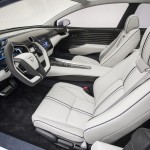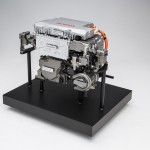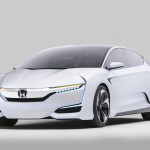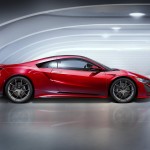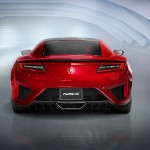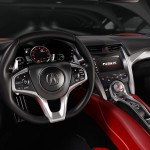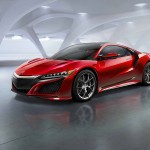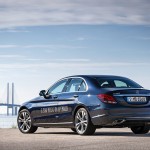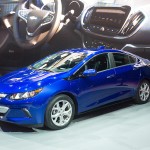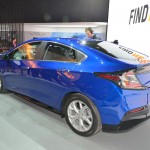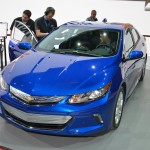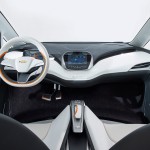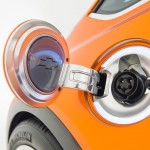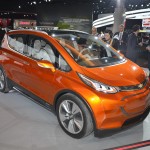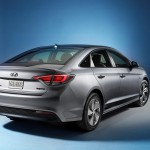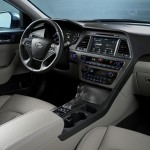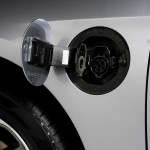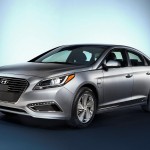The Detroit based 2015 North American International Auto Show (NAIAS) has given a huge amount of electric and hybrid appeal already. Being the first major event of 2015 dedicated to the automotive industry, car makers have been keen to make a splash and bang. Several announcements were expected, while others seemed to appear out of nowhere. Here’s a quick look at the best so far…
Honda FCV Concept
Honda’s original FCX Clarity set new standards for hydrogen fuel cell cars. First and foremost, it was a ‘normal’ car. It wasn’t wild or wacky whereby you couldn’t imagine owning one. Concepts have a tendency to be a bit outrageous, whereas the FCX Clarity was anything but. Sure, it featured some novel touches to the interior and exterior design but crucially, it was NOT a concept. Instead, it was available via lease in both the US and Japan as a production model. The new FCV Concept follows on from where the 2010 FCX Clarity left off. The new car features a major advancement in the shape of a very compact all-in-one fuel cell motor unit. This combines both the energy generation (the fuel cell) with the propulsion unit (electric motor) in a very neat and compact design. Up until now, fuel cell vehicles have tended to have rather messy component layouts to house all their necessary gubbins. The FCV Concept does away with all that, meaning the external and internal design can be that much more spacious and sharper – as you can see. Whether it will be offered on a similar lease basis to the FCX Clarity, remains to be seen.
Honda Acura NSX (Hybrid AWD)
It has been a very long time coming. The original set exceptionally high standards for its quality, driving ability and general greatness that is hard to follow. So hard, that the new NSX has taken a full twenty five years to appear, after the launch of the original. The new car is designed and built in the USA and powered by a twin-turbocharged 75-degree DOHC V6 engine with a 9-speed dual clutch transmission and three electric motor Sport Hybrid systems integrated, which all combines to provide all-wheel-drive. Honda call it, “Super-Handling All-Wheel Drive”. The car is said to be driver-centric and is made of new materials not before seen on a road-car.
Mercedes-Benz C 350 Plug-in Hybrid
Headlines here are an electric range of 19 miles and a combined total of 279hp with 600Nm torque, all the while only emitting 48 g/km CO2. This is all good for an official 134.5mpg both as a saloon and an estate. The car is set to be available in the UK from Summer 2016. Mercedes-Benz took the opportunity while they had the stage to add that there would be ten further plug-in hybrid models launched up to 2017. Unfortunately, it seems that rapid charging capability is missing, just as it was on the S500 PHEV.
Volkswagen Cross Coupé GTE
“People’s Car” may be what the brand name means, but people’s car this is unlikely to be! Featuring a rather large 3.6 litre V6 petrol engine and two electric motors, VW’s newest plug-in hybrid offers a combined 360PS. Acceleration is fairly rapid too, with 0-60mph being dealt with in just 6 seconds. In addition to the now common four modes of operation, e-mode, hybrid, battery hold and battery charge, VW have added, “Offroad” to the mix. E-mode delivers 20 miles of electric only range while the new Offroad option forces the car into all-wheel action. Cleverly, this mode is available at all times, even with a low battery charge state. The petrol engine sparks into life and uses the front electric motor as a generator to provide enough power for the rear motor.
New 2016 Chevrolet Volt
Much was known about the new Volt ahead of its official unveiling. Chevrolet had already gone to great lengths to describe their new battery and electric motor and had even shown off the front end of the new Volt at last week’s Consumer Electronics Show in Las Vegas. Now, the official unveil has happened we can finally see what the car looks like. Perhaps most obvious are the looks. Gone is the distinctive rear step in the body that made the first Volt (or Ampera if you hail from the UK) and now the car looks much more like any other ordinary saloon car. Of course, the EV range is improved – to around 50 miles – and the engine is perhaps one of the most efficient Chevrolet has ever dared make. Overall, the car’s technology is what will really sell it and its certainly the thing that is most worthy of mention. Looks are merely subjective.
Chevrolet Bolt EV Concept
With the statement about looks above in mind, the new electric Bolt EV Concept is a bit of a looker! Neat, purposeful lines and a suitably compact shape with aggressive styling make the Bolt far more interesting than the Volt above. Ok, we know, looks are subjective. Perhaps the biggest headline then is with the concept’s range; a stated 200 miles. Naturally, we suspect this to have been tested on a standard cycle. Given the car’s size, it likely has between 30-60kWh battery capacity. However, it should be stressed the car is but a concept. Several hints to this fact, with quotes such as, “what it MIGHT look like…” were made during the unveil. Pricing is promised to be around $30,000 too, making the car appear as affordable as a LEAF yet with twice as much range potential. Likewise, the time frame when this car might be released is hard to tell, but it appears as though Chevrolet will aim for 2017. For the first time, Chevrolet say they will launch the BEV in all 50 states too, meaning that it will be aimed at a more mainstream market, such as Nissan’s LEAF, rather than for legislative reasons in certain states – the current status of sales for the Spark EV. In all, it is perhaps the most noteworthy car thus far revealed at NAIAS but one which may not come to fruition, depending upon the next couple of years. Performance, charging and other ability is yet to be announced in full detail, although the concept features a simple 3-pin socket with no sign of rapid charging port.
Hyundai Sonata Plug-in-Hybrid
The 2016 Hyundai Sonata Plug-in Hybrid Electric Vehicle (PHEV) is expected to travel up to 22 miles on electric power. Featuring a healthy 9.8kW lithium polymer battery pack (which gives similar performance to a lithium-ion yet is better able to be packaged in smaller and more flexible dimensions within the car) gives about five times more energy than the non-plug-in hybrid Sonata. Total system power is 202hp while very conservative mpg estimates are indicated as, 38mpg urban, 43 extra-urban and 40mpg combined. Impressively, the drag coefficient is an incredibly low 0.24 cd making it class leader in slipperiness.

